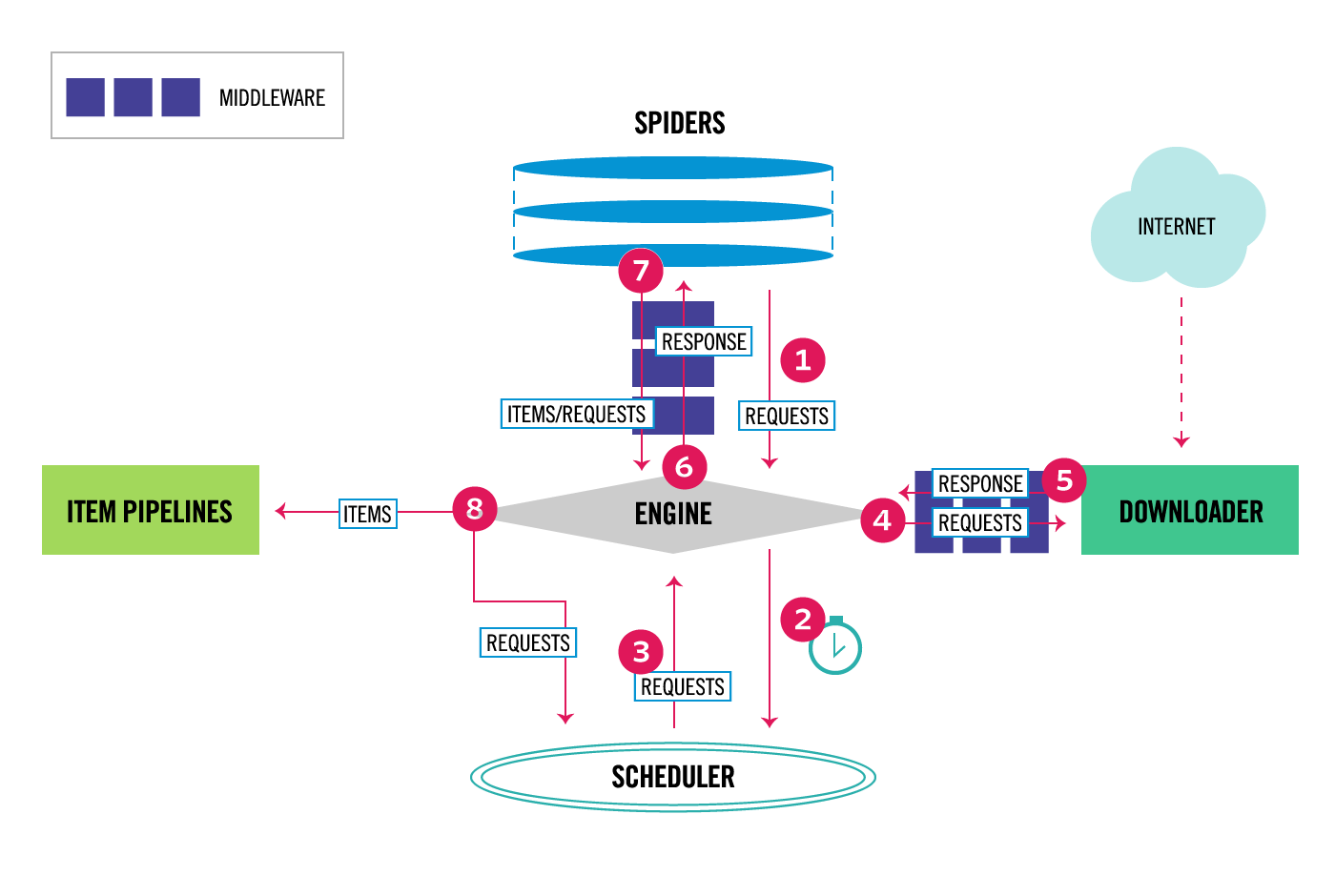Scrapy 框架中的数据流

尽管文档中这样提到:Scrapy中的数据流由执行引擎控制,如下所示
- The Engine gets the initial Requests to crawl from the Spider.
- The Engine schedules the Requests in the Scheduler and asks for the next Requests to crawl.
- The Scheduler returns the next Requests to the Engine.
- The Engine
sends the Requests to the Downloader,
passing through the Downloader
Middlewares (see
process_request()). - Once the page finishes downloading the Downloader
generates a Response (with that page) and sends it to the Engine,
passing through the Downloader
Middlewares (see
process_response()). - The Engine
receives the Response from the Downloader
and sends it to the Spider
for processing, passing through the Spider
Middleware (see
process_spider_input()). - The Spider
processes the Response and returns scraped items and new Requests (to
follow) to the Engine,
passing through the Spider
Middleware (see
process_spider_output()). - The Engine sends processed items to Item Pipelines, then send processed Requests to the Scheduler and asks for possible next Requests to crawl.
- The process repeats (from step 1) until there are no more requests from the Scheduler.
但是具体到程序中是如何体现的呢?在项目运行时,控制台中就有输出提示信息。如果要更直观的体现,不妨在每步对应的函数中打印自己设置的提示信息。例如:在自己的项目管道中可以这样做
1 | class MyPipeline(object): |
项目运行后,就可以看见他们的输出顺序了:
1 | ------------ from_crawler -------------- |
了解框架的处理逻辑对我们编写高效代码是很有好处的。